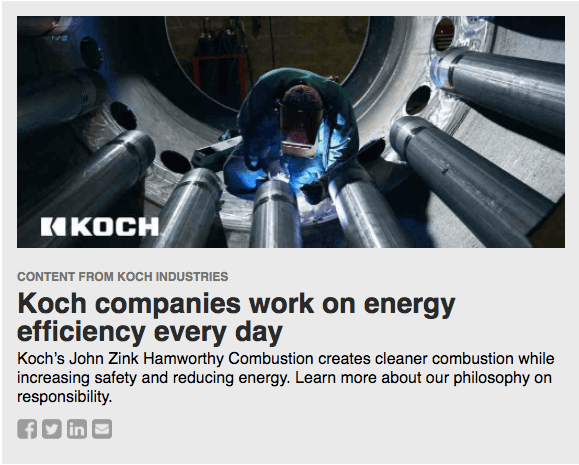How Solar Technology Benefits Homeowners


Energy production has changed dramatically in the last decade. There is enough solar energy capacity in the United States to power 8.3 million homes. In fact, solar power accounted for 39 percent of the new electricity generation capacity in 2016, exceeding new coal, natural gas, and wind energy capacity. In the last ten years, the cost of solar energy has plummeted by over 60 percent – making it a smart investment both economically and environmentally.
Solar energy technology advances have helped to minimize the impacts of shading, increase the efficiency of the solar array, and enable web-based solar system monitoring. Homeowners can now convert more sunshine into electricity, gather system electricity production information from afar, and even install productive solar systems on complicated rooftops. These technology advances will help further the solar industry and promote wider use of solar energy.
Solar equipment solutions for low-light condition
Shading from trees, buildings, and other obstructions can dramatically decrease the output of a home solar system. Even a chimney or dormer on the house can make a big dent in overall solar electricity production. There are now solar technologies that mitigate this issue because some solar panels are less impacted by shading or cloudy weather.Solar inverters convert DC electricity to AC. Inverters have advanced considerably in recent years and are now the brains of many solar PV systems. This achievement has increased the productivity and agility of many solar energy systems. Some inverters use multiple power point tracking to reduce the impacts of shading.
Microinverter and power optimizer technology enable every solar panel to function independently. This prevents the “Christmas tree light effect,” where an underperforming solar panel can dramatically and disproportionately reduce the total PV system output. Microinverters and power optimizers are especially useful when the solar array is partially shaded or has soiled PV panels.
“Another great benefit of this technology is its troubleshooting capability,” said Chuck Piper, co-owner of Sundog Solar, a Maine solar installation company. “A homeowner can view her system in real time and spot potential problems for quick repairs. In the past, a system problem may not have surfaced for several months, leading to power production loss.”
Increased PV panel efficiency
Solar panel efficiency is determined by the ratio of sunlight converted to electricity. This is important because more solar energy can be generated in the same amount of space. In other words, homeowners can produce a larger quantity of solar electricity in a limited space. The first solar cells were less than 2 percent efficient. In recent decades, solar panel efficiency has skyrocketed. There are now PV panels on the market that are 22 percent efficient, and most panels are between 14 and 16 percent. There have been promising laboratory advances towards solar panels that are 50 percent efficient which will continue to drive costs down.Image Credit: Sundog Solar
Trump’s Delay of Calorie-Counting Rule Irritates Restaurants


No matter how one feels about the Trump administration’s policies, one thing is clear: Business always benefits one way or another from certainty. Witness the White House’s decision to walk away from the Paris Agreement and the confusion it has created. Some industry groups may support the decision, others, as global operators, will continue to mitigate climate emissions and still others will decide to step up their climate action efforts in turn.
Similar confusion has stemmed from the Food and Drug Administration’s 11th hour delay of a rule that would require restaurant chains to reveal the number of calories in their menu items. The rule was one legacy of former First Lady Michelle Obama, who spent much of her time in the White House fighting against public health challenges such as the U.S. obesity epidemic. Critics have charged that Trump’s swipe at Obama’s healthy lifestyle initiatives, such as improving school lunches, is just one example of how the White House is determined to eliminate any trace of the previous administration’s fingerprints from the federal government. Obama’s activism, however, already nudged some “big food” companies to change their food labeling.
The Trump Administration claims that the rollback removes regulatory burdens. The problem, however, is that the rule was canceled just four days before it was supposed to be implemented – after companies spent weeks, months, or even years on new labeling requirements. “Now what’s left is a hodgepodge of inconsistent menu labeling that’s confusing for consumers,” summed up Politico.
While pizza companies, convenience stores and grocers have pushed back at calorie-counting disclosure requirements, restaurants in general have been supportive a federal standard, arguing that it would replace the complicated patchwork of state and local regulations.
Meanwhile, health advocacy groups have been furious at the administration’s attempt to scale back calorie disclosure rules. The American Heart Association has supported the public disclosure of calorie information, saying it can help people “know their energy” needs as a tool in their kit to prevent obesity and heart disease. “Rather than delaying these requirements, the FDA should focus on putting the power of decision making in consumers’ hands,” said the association’s CEO Nancy Brown.
Academic studies have also suggested that knowledge of caloric and nutritional information can help parents impart better food choices to their children. “More salt, less nutrition info,” concluded National Public Radio in a recent analysis of the Trump Administration’s food policy.
Meanwhile, more local governments are ramping up efforts to make calorie counts mandatory on restaurant menus. New York City is one municipality that will forge its own path with a rule stating that any restaurant chain with 15 or more locations nationwide must disclose not only calories, but full nutritional information, on its menus. The city’s health department was ordered to enforce those rules starting on May 22. The result is inconsistent menu labeling across the U.S., which piles onto the confusion the national restaurant industry would like to avoid in the first place.
To the Center for Science in the Public Interest (CSPI), menu labeling should not be a partisan issue. “Republicans are just as likely as Democrats to suffer from diabetes, heart disease, and other diet-related health problems,” said CSPI’s nutrition policy director Margo Wootan last month in a public statement. “Yet the Trump Administration is myopically putting Big Food’s interests over the interests of American consumers.”
Image credit: Bradley Huchteman/Flickr
Pulling Out of Paris a Blow to American Business, Innovation, Jobs


By Mindy Lubber and Bob Keefe
On the campaign trail, Donald Trump promised to be “the greatest jobs president that God ever created.”
But our would-be jobs president is risking millions of jobs and U.S. economic competitiveness with his short-sighted decision to pull the United States out of the Paris Climate Agreement.
More than three million American workers and counting now earn a living in the clean energy sector. The international clean energy market is worth an astounding $1.4 trillion a year. Delivering on the promise of the Paris climate agreement would unlock an estimated $19 trillion in economic growth globally.
By pulling out of the Paris Agreement, President Trump just told those three million American workers he doesn’t care about their jobs. He’s invited signatories to levy carbon tariffs on U.S. goods shipped overseas – a step the European Union and other countries are now considering.
And he has signaled he’s willing leave America on sidelines (alongside Syria and Nicaragua, the only other countries not part of the Paris Agreement) while other countries take leadership on climate and clean energy - and reap the economic rewards that come with it.
China, for instance, is investing at least $360 billion on renewable energy in the next three years. Already the world’s biggest producer of solar energy, China is now home to five of the six largest solar panel manufacturing firms. Two years ago, it overtook the United States as the largest market for electric vehicles. In turn, China has created millions of clean energy jobs, helping lead to an annual economic growth rate of nearly seven percent.
American businesses don’t want to play second fiddle to China or any other country. That’s why more than 1,100 companies signed a statement backing the Paris Agreement and low-carbon policies. It’s why more than 30 CEOs from Goldman Sachs to Dow Chemical Company to Procter & Gamble took out a full-page ad calling for continued U.S. participation in the Paris Agreement.
And it’s why, while President Trump was at the G-7 meetings in Italy last week, more than 365 business leaders and investors from large, medium and small businesses signed yet another letter imploring President Trump not to take away business opportunities by pulling our country out of the Paris Agreement.
Plain and simple, American companies know the Paris climate agreement is good for business. It’s a chance to ensure America leads in a thriving new energy sector, instead of falling behind competitors.
Unfortunately, President Trump didn’t listen to business leaders, his Secretary of State, or other clear voices of reason who advised him that pulling out of Paris will hurt our international relations, our economy and our environment.
Now it’s up to others to fill the void he’s left.
Congress can start by not agreeing to the drastic and draconian cuts President Trump has proposed for the Department of Energy (DOE) and the Environmental Protection Agency (EPA) – cuts that would eliminate the highly successful Energy Star efficiency program, DOE’s energy R&D programs, and slash funding for renewable energy and energy efficiency projects across America.
States must continue to find ways to lead where Washington is failing us. While President Trump was pulling out of Paris, the California legislature pushed forward plans to get 100 percent of the state’s power from renewables. Other states are making similar moves because they know jobs, investments and a cleaner air and water come with it.
And business leaders must continue to lead by example by expanding their own sustainability efforts, demanding more clean energy for their factories and offices and making it known in Congress, in the states and on the international stage, that they support action on climate and clean energy.
Even if our president continues to ignore them.
Mindy Lubber is CEO and president of Ceres, a nonprofit sustainability advocacy organization working with the most influential investors and companies to build leadership and drive solutions throughout the economy.
Bob Keefe is executive director of E2, a national nonpartisan group of business owners, investors and others who advocate for policies that are good for the economy and good for the environment.
Image credit: Zach Dischner, Flickr
TriplePundit -- On Growing Up


Avid readers will have read the news. This week, TriplePundit was acquired by 3BL Media, the leading provider of distribution services for corporate social responsibility and sustainability news and content. As we whispered a sneak preview to friends and colleagues in person at the Sustainable Brands conference in Detroit last week, it was hard to keep the news to ourselves.
Go ahead and pop the champagne bottles – this is tremendous news for our organization and the sustainability movement as a whole.
Here’s why. We can almost write it with muscle memory. The climate situation is dire. According to the best available science, we needed to curb carbon to zero net emissions by 2020 in order to avoid the worst impacts of climate change. That’s three short years away. Globally, we aren’t anywhere close to reaching that aggressive target and time marches on. Even the landmark commitments the world made in Paris in 2015 remain a question mark, thanks to President Trump’s decision to back out of the U.S. commitment. Climate change is only the beginning. We are also called to tackle political strife, conflicting cultures, economic uncertainty, and a host of other social and environmental issues.
As parents, we’re deeply nervous about the uncertain world our children will find when they reach adulthood the 2030s. How can we prepare them for successful lives when we don’t know what skills they’ll need or the future state of the world? We all need to keep fighting as hard as we can to effect positive change. We don’t have a choice. For TriplePundit, that means telling stories of businesses leading the charge – to inspire and to inform. There is no doubt in our minds that the best way for us to do that is as members of the 3BL Media family.
During one of our earlier conversations, 3BL Media CEO Greg Schneider told us that his original goal for the company was to build a sustainable company in the financial sense. He’s done that and more. His clients love the easy-to-use platform to distribute their CSR news and they love the clean reports they get bring their results back to the boardroom. 3BL Media employees are happy and engaged, and they have a good work/life balance.
We understand that a reputation takes a lifetime to develop and a minute to destroy, and we are thrilled that the team at 3BL Media sees value in working with TriplePundit to drive the conversation on sustainability in business. They’ve given our team free range to do the type of reporting that we’ve always done – only better.
We’ve had some great adventures in the last 12 years, and we’ve produced a lot of outstanding content. Take a walk down memory lane to some of our best-reported series:
We have a hard-won reputation for deep knowledge of the sustainable business landscape and the triple bottom line and for reporting that gives credit where credit is due. We don’t stand for greenwashing and we have no plans to change that. In the next phase of life, we’ll be focusing on quality over quantity, delivering a unique take in every article. We are doubling down on our commitment to bring you stories of triple bottom line thinking in your communities and in our world. We’ll also continue to examine the implications of a policy sphere that neglects long-term, systems thinking.
As members of the 3BL Media family, we’ll have more resources to deliver quality reporting you can’t find anywhere else. And we’re thrilled to join a well-financed organization that “has our back” and sees the social and economic value of our work.
Of course this merger will offer new opportunities for sponsors and clients to showcase their CSR cred. 3BL Media clients will have new opportunities to support crackerjack editorial (like our upcoming series on Business in Society – email us to hear more!) and lead dynamic Twitter Chats. TriplePundit’s editorial sponsors can access 3BL Media’s analytics on the performance of the series they support, unparalleled distribution of their news releases, and dedicated staff to maximize their exposure.
This is just the beginning and we can’t wait to see where it takes us. We’re eager to hear your feedback. Share your thoughts in the comments below or tweet us @triplepundit.
Koch Bros Sponsor Washington Post Energy Coverage


When Jeff Bezos purchased the Washington Post (or WaPo) for a reported $250 million in 2013, the reaction of most analysts was shock that one of the internet’s leading entrepreneurs would invest in a fading business. The 140-year-old paper had long been one of America’s most prestigious papers, and will long endure in the nation’s consciousness for its unearthing of what became the Watergate scandal in the 1970s. But like many news publications, it was unable to change with the times as consumers devoured more news, and content, online.
But Bezos has succeeded in transforming the Post, and has revamped its online presence into one of the best news sites on the web. Its embrace of technology has made it a darling of readers and advertisers alike, as the content is outstanding. Not only is it still a rich font of political news, but it covers just about every topic. Yes, the Post is still very much left-of-center, to the consternation of conservatives. The newspaper’s tagline, introduced earlier this year, says it all: “Democracy Dies in Darkness.”
One could say that no other news site is as rich in a diverse array of content, other than the UK’s left-wing Guardian. In contrast to the Guardian, which repeatedly lectures us that everything we do is wrong – from the use of emojis to dating tactics – the Post is far less strident in tone and quite frankly, is far more of a joy to read. And unlike the Guardian, the Post will run content from columnists who are to the right of Bernie Sanders – as in centrist political observer Chris Cillizza before he recently left for CNN and conservative political analyst Jennifer Rubin.
On the energy and environment front, the Post is also a leader; we at 3p are quick to mine its content, as it now regularly issues lengthy and detailed investigative reports that are on par with Bloomberg or the New York Times. Investigative journalism is not yet quite dead, and Bezos and the Post deserve plenty of kudos for resuscitating a craft that currently few media companies are willing, or able, to fund.
So imagine our surprise yesterday when we noticed that the newspaper’s daily Energy 202 email newsletter was sponsored by . . . the Koch Brothers.
The banner ad at the top of the email was a jolt, considering the Post has been guarded, and often critical, about the Koch brothers’ influence on American politics as well as the tactics they have adopted to further their agenda. Plenty of articles in the newspaper’s archives outline their funding of non-profits and academia in order to advance their cause, which broadly defined is limited government and personal freedom.
In fairness, the Post has also suggested that the Koch brothers will be behind conservatives’ resistance to some of the Trump Administration’s goals, although in reality both agendas offer plenty of alignment. Nevertheless, the newspaper’s reporters have made it clear where they stand on the Koch’s brothers’ influence in American politics. “Simply put, the Koch network is a GOP-aligned political effort like nothing we have seen, including operations such as the Club for Growth and Americans for Tax Reform that also aspire to sharply reduce taxes, government spending and regulations,” concluded one Post article in February 2016.
To the Koch brother’s critics, their groups’ determination to roll back any progress on environmental remediation or clean energy deployment is clear. The Club for Growth, for example, applauded the White House’s imminent decision to withdraw from the Paris Agreement. “All cost and no benefit,” is what COP21 is about, says Americans for Tax Reform on its web site.
Of course, clicking on that banner ad in the Energy 202 newsletter shows a far different story. The banner takes you to Koch Industries’ corporate responsibility web site, which touts the company’s environmental awards, including its 2017 Environmental Protection Agency (EPA) 2017 prize as Energy Star partner of the year. Meanwhile, the Post has not been shy about covering the Koch brother’s stance on the EPA – witness its reporting earlier this year of their ties to the current head of the EPA, Scott Pruitt.
So why would the Post accept advertising from an organization that clearly aims to mislead readers on its approach towards environmental stewardship, clean energy and a low-carbon economy? 3p contacted the Post to find out why; as of press time, the newspaper has not yet responded to our request for comment.
Trump's Paris Agreement Exit Cedes Climate Leadership to Private Sector and Local Gov’t


The reaction to the news that the Trump White House would pull out of the 2015 COP21 climate agreement was swift. Environmental groups, of course, were quick to respond.
“The Paris climate accord is a triumph of American leadership. It’s about doing what’s best for our people at home - spurring clean energy innovation and creating millions of good-paying jobs,” said Rhea Suh, President of the Natural Resources Defense Council. “Trump would be walking away from that American victory, abandoning U.S. climate and clean energy leadership and breaking our promise to the rest of the world.”
Whether the U.S. actually stays or remains in the Paris Agreement is still not clear. What has been obvious is that even if the U.S. remains a signatory to the global climate deal, it would be in ink only. The changes that the Trump Administration has made to environmental policies make it impossible for the U.S. to meet its commitment. In the view of many supporters of the Paris Agreement, the U.S. has joined fine company along with Syria and Nicaragua, which did not sign the accord – although the truth is those nations’ lack of participation is far more nuanced.
What has raised alarm amongst many leaders here in the U.S. and abroad is that backing away from COP21 sends a signal: that the U.S. will lag when it comes to climate change leadership.
But that sentiment may not be necessarily true. After all, the U.S. could still lead, whether or not the current White House changes course. It is just that the private sector will have to step up. And recent evidence suggests it already has. Furthermore, the actions of local leaders in towns and cities, where 80 percent of Americans live, can fill the gaps left by the Trump Administration’s abandonment of the Paris Agreement.
Many U.S. business leaders have already made it clear that they want to stay in the accord, and that list includes CEOs of companies as diverse as 3M, Bank of America and Disney. And one CEO who has been outspoken about climate action, Elon Musk of Tesla, has reportedly said he will quit serving on any of the Trump Administration’s advisory councils if the U.S. walks away from the COP21 deal.
[embed]https://twitter.com/elonmusk/status/869971423455924224?ref_src=twsrc%5Etfw&ref_url=http%3A%2F%2Fmoney.cnn.com%2F2017%2F05%2F31%2Fnews%2Felon-musk-paris-climate-deal-trump%2Findex.html[/embed]
Words, however, need to be backed with action, and the evidence suggests the private sector will continue to make progress on climate change mitigation. One local leader who is believes the private sector will not back down from climate action commitments is Jim Brainard, the popular GOP mayor of Carmel, Indiana, a town of 90,000 north of Indianapolis.
Brainard has been elected and easily re-elected as Carmel’s mayor, and has not been shy about ducking party orthodoxy. During an interview by telephone with TriplePundit, his reaction to Trump’s anticipated announcement was one of dismay, yet guarded optimism. “It’s disappointing,” he said, “as even though the market is going to continue to move us along, I have several concerns.”
To that end, Brainard gave a spirited defense of the Paris Accord. “If the president wants to be a leader of a great country - and we all agree that we want the U.S. to be great - if we’re going to be great, we have to keep our word,” he said.
Brainard continued to explain that great countries have clean air, provide clean drinking water, and are willing lead the world when there is a problem. Plus, Brainard insisted, great countries need to provide citizens good jobs, and green building and renewables are offering more opportunities. “And, a great country isn’t going to be dependent on fossil fuels. In the event of any conflict or war, it is important that we are more resilient.”
And that is where the private sector and municipalities can step in as the federal government steps back.
After all, explained Brainard, companies can save money by striving to be more sustainable and staying focused on climate goals. One example Brainard offered is Walmart, which has worked on packaging redesign and plastics recycling, which reduces both waste and greenhouse gas emissions.
Furthermore, the private sector can work with local leaders to find ways to reduce emissions and build the “smart cities” of the future. Brainard pointed out solar projects that are ongoing in Carmel, including installations made possible by the city’s “rainy day” fund. “We’re reducing the cost of our electricity, which comes from coal, and we’re getting a 10 percent annualized return on the investment,” said Brainard.
Small examples like Carmel’s investment in solar, insisted Brainard, together will make big differences in the long run. “Our system of capitalism is going to encourage companies to conserve because it saves money,” he continued, “and as a result, this system of capitalism is going to take advantage of the demand for green building solutions and renewable energy projects, because companies can make money doing it.”
In the end, market forces will dictate the direction to which companies will move, and the evidence suggests additional low carbon technology investments will be on the horizon.
“Government is powerless in preventing the progress that companies and people demand, so in the case of renewable energy, and I don’t see any reason why this is going to stop,” said Brainard, “and the rest of the world wants these products whether or not we stay in or out of the Paris accords.”
Image credit: Carmel City Center/Wiki Commons
The Case for Climate Optimism


By Sheila Bonini
There is no silver bullet for the environmental challenges we face. And no single individual, company or government can bring about the scale of change needed. But everyone — from governments to businesses and civil society — has a stake in building a sustainable future. Together, we can deliver solutions on a global scale.
For the past eight years, the federal government has been squarely in the vanguard of clean-energy policy and action on climate change. But today, the political landscape in Washington is shifting. And just as the current administration considers rolling back much of the recent progress on these crucial issues, the private sector is taking up the mantle of climate leadership.
At first blush, businesses may seem an unlikely candidate for this new role. But increasingly, businesses are recognizing the bottom line value of a low-carbon economy. For them, sustainability is an opportunity to generate economic value and advance lasting solutions to one of society’s greatest common challenges.
As America’s engine of innovation, businesses are particularly well-suited for this task. Throughout our nation’s history, leaders of industry have been the driving force behind the advent of new technologies and practices, changing not just the way we do business, but our very way of life. Now they are tapping into that same wellspring of ingenuity to address the threat of climate change.
And for those on the leading edge, investments in sustainability are already yielding dividends. Nearly half of American Fortune 500 companies have set climate targets. Last year alone, their efforts to reduce greenhouse gas (GHG) emissions generated $3.7 billion in savings.
As businesses of all sizes establish climate targets, many are becoming more ambitious with their goals. Around the world, more than 200 companies have set targets aligned with the best available climate science. Globally, 95 companies have committed to power their operations with 100 percent renewable energy, compared to only a handful of companies just a few years ago.
Some companies are expanding their efforts to reduce GHG emissions and waste by shifting the focus to their supply chains (which on average account for four times more emissions than a company’s direct operations). Walmart, for example, recently launched Project Gigaton, a groundbreaking endeavor that aims to reduce one gigaton (one billion tons) of emissions from their global supply chain by 2030.
Apple also continues to pursue bold commitments. Apple’s global facilities are now at 96 percent renewable energy, including 100 percent renewable energy for their data centers around the world, and they are driving clean energy adoption in their supply chain to address manufacturing emissions.
Apple is also partnering with the nonprofit sector to tackle the critical issues of deforestation and forest degradation – responsible for an estimated 15 percent of all global GHG emissions.
Through a five-year project, Apple and WWF are helping China—the world’s largest producer and consumer of paper products—reduce its environmental footprint by producing paper products from responsibly managed forests within its own borders. A major goal of the project is for 1 million acres of forest land to be certified by the Forest Stewardship Council (FSC) or under improved forest management. We are well on our way to reaching the goal. Approximately 320,000 acres of forest land are in the final stage of receiving FSC certification and eight companies have committed to improving the management of 450,000 acres of forest land. Apple, with partners like us, is now protecting or creating enough responsibly managed forest to cover all of the virgin fiber needed for their packaging.
P&G is tackling climate change through an integrated approach that includes setting science-based targets, an ambitious renewable energy goal of 30 percent by 2020 and 100 percent long-term. They are also increasing energy efficiencies across their 100 manufacturing sites globally, which has resulted in $500 million in savings since 2010. And, they recently encouraged the American consumer to adopt energy-saving laundry habits through the Sustainable Laundry Pledge.
Apple, P&G, and Walmart are not alone. Savvy business leaders across a wide range of industries are steaming full speed ahead toward the low carbon horizon. And more are joining their ranks every year. But our greatest challenges still lay ahead. And we need more leaders to heed the clarion call to action.
When businesses like Apple, P&G, and Walmart make large-scale investments in the renewable energy space, it sends a powerful signal to their peers. And as more businesses engage in collective initiatives, they find it easier to lift up proven solutions and take them to scale. While these companies scale up their targets, many are also becoming more vocal in their support for local, state, national, and international policies—including the historic Paris Agreement—in order to accelerate America’s transition to a low-carbon economy and to make the U.S. more competitive in the world economy.
Long-term growth requires long-term vision. Now more than ever, America’s business leaders see the value of making sustainability business as usual. And that is reason for optimism.
Image credit: Pexels
Sheila Bonini is Senior Vice President of Private Sector Engagement for the World Wildlife Fund.
Climate Change Might Finally Be A Key Voter Issue Come 2018


By Evan Lund
Nestled south of Edwards Plateau in central Texas is Lamar S. Smith's congressional district, formally known as Texas's 21st congressional district (TX-21). The district includes concentrated liberal pockets near Austin and San Antonio before expanding west into a big chunk of Texas Hill Country. Since 1987, Smith has held the District 21 seat in the House of Representatives for the Republican party. For most of his tenure, he hasn't had to sweat the prospect of losing his seat; from 1988 to 2002, the Congressman never won re-election with less than 72 percent of the vote.
Congressman Smith is not just some middle-of-the-road Republican. He recently received the Award for Conservative Excellence from the American Conservative Union Foundation with a 92 percent score on his votes during the year - the average House Republican scores an 82 percent. Referencing his score, Smith said, "My votes represent my constituents. I continue to stand for liberty, personal responsibility, traditional values, and a strong national defense." Based on his track record, the majority of constituents in TX-21 do support his votes, as do his campaign donors.
Texas has more operable oil refineries than any other state. In 2014, those refineries produced 1.2 billion barrels of oil - more than one-third of the total U.S. output. Considering the enormous wealth the industry generates for Texas, big oil interests have considerable influence over anyone seeking political office in the Lone Star State and beyond. Leading up to the 2016 presidential election, Ted Cruz received about $25 million dollars - more than half of his SuperPac's funds - from fossil fuel donors. And the funds don't flow to only one end of the political spectrum. U.S. Representative Henry Cuellar, a Democrat, raked in over $165,000 from the oil and gas industry during his 2015-2016 campaign cycle. Congressman Smith is no exception. Since 1998, he's received over $700,000 from oil and gas companies, which tops Smith's list as the industry responsible for the most money contributed to his career campaign cycles.
Like Cruz, Smith is an ardent denier of the imminent dangers of climate change. In a recent Wall Street Journal op/ed, he expressed his frustration with the Obama administration's overblown, alarmist rhetoric, claiming their intent was advancing a political agenda, not pre-cautionary, evidence-based policies. He ends the article on a powerful note: "When assessing climate change, we should focus on good science, not politically correct science."
Which begs the question, what is good science? And who gets to decide it? The answer, to a certain extent, is Lamar Smith, because in 2013, Republican house leaders appointed Congressman Smith as the Chairman of the House Committee on Science, Space, and Technology (HCSST).
While its jurisdiction has expanded, now responsible for federal agency budgets totaling $39 billion, the focus of the committee has endured: establish priorities and provide key oversight of non-defense federal scientific research. Per the Committee's website, Smith's responsibilities are promoting "legislation that encourages scientific discoveries, space exploration, and new technologies."
This makes Smith's position on key scientific issues all the more troubling. He once stated that his only goal as Chairman is "to protect the American people from unnecessary and burdensome regulations and to force the Obama administration to tell the truth." His goal doesn't necessarily preclude the notion that promoting legislation enabling scientific discovery can occur alongside eliminating regulations and forcing people to tell the truth, but the common ground between the two isn't obvious. What is obvious is his devotion to his cause. As Chairman, Smith has the power to review supporting documentation of published studies from the federal agencies within his purview. If an agency doesn't comply, he can issue a subpoena, which occurred more times in his first three years leading the committee than it had in its 54-year history. Part of the surge in scrupulous study review can be attributed to Smith's dismissive attitude toward most climate scientists and his strategy to limit federal funding for projects that are not "in the national interest." Considering the futility of predicting conceptual and technological breakthroughs in any scientific field, it's arguable that a non-scientist in charge of prioritizing research projects based on his own qualifications of good, sound science isn't positioning the country for success.
And it's not just the scientific community that has grown increasingly more critical of Smith's leadership. For the first time ever, Smith's 2016 re-election resulted in less than 60 percent of the general vote. He still won by more than 70,000 votes over the Democratic candidate, Thomas Wakely, but a host of Democratic challengers are now considering a run at Smith's seat in 2018. Joseph Kopser, a former U.S. Army Ranger and Austin-based tech executive, exemplifies the type of high-quality candidate seeking to represent constituents in the 21st district. Kopser served in the Army for 20 years before co-founding a public transportation routing efficiency app that he later sold to Daimler AG, parent company of Mercedes Benz. He's broadly involved in organizations affecting Texas policy efforts, and wants to disrupt the innovation void left by Congressman Smith's agenda.
Another Democratic hopeful is Derrick Crowe, who boasts some Capitol Hill experience among his credentials. Crowe worked as a congressional staffer for senior Democrats for six years, and since returning to Austin, has directed his energy toward developing a platform based on climate action. He is not disillusioned by the prospect of overcoming Smith's donor's deep pockets, and expects his campaign message to "motivate voters in a way that corporate money can't."
It's imperative that anyone challenging the incumbent is not disillusioned by the Congressman's financing or his 16 straight victories. Or by the way the Texas 21st district is drawn, which makes it extremely difficult for a Democrat to compete. But make no mistake - the climate science debate is not going away. Smith has built his brand on publicly mocking and harassing climate scientists, and even his colleagues fear his political objections have turned personal. Unseating him will require convincing those who share his beliefs that cherry-picking the available data to advance a preferred narrative isn't in the country's best interests nor is it good, sound science - it's politics.
Evan Lund is a former scientific researcher based in Chicago. He started a research scientist interview series called B-sides and Research that you can visit here.
Image credit: Harrison Moore via Unsplash
Insuring Nature to Ensure It Protects Us


By Kathy Baughman McLeod
When you hear the word ‘nature,' what do you think about? A pristine beach? A city park? Maybe your favorite wild animal?
Nature means different things to different people. But do you think of nature as a powerful source of protection from storms, rising sea levels and other negative impacts of climate change? If you don’t, then you should.
June 1 marks the start of the 2017 Atlantic hurricane season. And with warming ocean temperatures and rising seas, each passing hurricane season proves that what we once called ‘natural disasters’ aren’t so natural anymore.
The National Oceanic and Atmospheric Administration (NOAA) predicts 11 to 17 named storms to hit the Atlantic coast this year. Five to nine of those could become hurricanes, and up to four could become major hurricanes (Category 3, 4 or 5 with winds of 111 miles per or higher).
We can’t afford to do nothing. Literally.
Climate change is no longer a distant threat. We are living with the reality of it, right here and right now. The impacts of climate disruption in American states like Louisiana, North Carolina and California -- and around the world -- are clear, costly, and widespread as storms, floods and droughts become more severe and less predictable.
An estimated 840 million people around the world live with the risk of coastal flooding, and for coastal communities, the health of their economies is directly related to the health of their coastal ecosystems. For example, in 2012, while Hurricane Sandy did tremendous damage to the eastern U.S., coastal wetlands likely saved more than $625 million in flood damages across 12 states.
Nature, including coral reefs, mangroves, wetlands, sand dunes and healthy beaches, are the first lines of defense to slow waves, reduce flooding and protect coastal people and property. Seawalls, breakwaters and sand bags often come to mind as traditional disaster preparedness tools, but these are not the only options. And sometimes they aren’t even the best option.
Coral reefs protect 200 million people around the world. A healthy coral reef can reduce 97 percent of a wave’s energy before it hits the shore, and just 100 meters of mangroves can reduce wave height by 66 percent. These nature-based solutions are cost-effective, self-maintaining and adaptable to sea-level rise. And they also offer other benefits to communities that traditional “grey infrastructure” solutions simply can’t, including improved water quality, fish production and new ecotourism opportunities.
Economists, engineers, insurers and conservationists are together developing new science, models and strategies to evaluate and leverage the protective services of this natural infrastructure, including coral reefs and beaches, and to make sure they can be restored after a damaging storm.
Indeed, one of the most promising new developments to maximize the value of nature, like reefs and beaches, is the possibility of actually putting an insurance policy on it—to protect the health and protective services of these ecosystems and ensure they are restored after extreme storms hit. This combination of insurance and new science for protecting and improving the heath of reefs and beaches so they can continue to protect us, is a powerful one.
The increased threats of severe storms and climate impacts are here today. So too are replicable and scalable nature-based solutions. We need action at all levels, from the international to the local, to shift our behavior and thinking around nature and invest in it at a level commensurate with the value it provides us.
We have the opportunity, with eyes wide open to the threats of climate change and severe storms, to look at the full suite of solutions available to us to protect and sustain coastal communities and economies. And as this hurricane season is upon us, that includes taking a closer look at the potential of insuring nature to ensure nature keeps protecting us.
Kathy Baughman McLeod is the Managing Director for Climate Risk and Investment at The Nature Conservancy.
Image ©Jeff Yonover
When Boycotts Work: Sean Hannity Takes Up Arms Against Rachel Maddow


TriplePundit has been tracking the surge in boycott activity associated with the presidency of Donald J. Trump, and the latest example promises to yield some particularly interesting insights. Fox personality Sean Hannity has begun pushing back against a new advertiser boycott of his show "Hannity," by promoting a counter-boycott against Rachel Maddow of the competing network MSNBC.
The question, as always, is will it work?
The Sean Hannity boycott: will it work?
Before we get into the deep weeds of how this particular boycott and counter-boycott developed, let's review one of the main points that TriplePundit has learned about consumer boycotts: they rarely work.
Especially in this age of social media, boycotts are easy to launch, but they are notoriously difficult to sustain.
Boycotts do tend to be successful, though, when they target a formerly strong brand that is beginning to crack around the edges.
It's also helpful to pick apart what is meant by "work." Generally boycotts are understood to be aimed at forcing a behavior change by the target company. Sometimes, though, they are intended to to put their target right out of business.
One recent example of the out-of-business model is Sean Hannity's sister show on Fox, "The O'Reilly Factor." It was quickly drummed off the air earlier this year by an arguably successful advertiser boycott, but only after its namesake host Bill O'Reilly was exposed to accusations of serial sexual harassment. Without that vulnerability, O'Reilly and Fox may have been able to weather the storm.
So far, Hannity's brand appears to be relatively strong compared to O'Reilly, judging from the initial advertiser reaction.
The Hannity boycott gained steam on May 23rd, when Media Matters published a list of scores of Hannity Show advertisers. That list was then publicized by Rachel Maddow on The Maddow Show. As of this writing, though, only ten of those advertisers dropped their ad buys from Hannity.
One of those advertisers was the military financial services firm USAA -- who also dropped Maddow, citing general concerns over advertising on "opinion shows." Following pushback from customers, USAA, later sent out word that it would reinstate its advertising with Hannity.
After that change of heart, on May 30th Hannity appealed to his Twitter followers to support the advertiser:
Please support them, they are returning to my show@USAA -
That small victory may prove to be a hollow one for Hannity, though. As of May 30th USAA, clearly eager to avoid picking a side, stated that it would also reinstate Maddow, pending a more thorough review of its advertising policies.
When boycotts work: the behavior change
Although the Hannity boycott has so far failed to achieve anywhere near the terminal force of the O'Reilly boycott, it has succeeded in motivating a behavior change at the Hannity show.
Media Matters traces the boycott to May 16th, when Hannity revived a thoroughly debunked conspiracy theory involving the tragic murder of a Democratic National Committee staffer last summer.
Despite pushback from other conservative media and a direct plea from the victim's family, Hannity insisted on hammering away at the story. By May 20th he worked up to a fever pitch. He fanned the flames with a promise that Kim Dotcom, the fugitive hacker who is credited with posting proof of the "conspiracy" online, would appear on his show.
However, by May 23rd -- when Media Matters published the list of advertisers -- Hannity abruptly backed off. The Kim Dotcom interview failed to materialize, and Hannity has apparently pledged not to pursue the matter on his eponymous show.
Fox further cemented the news blackout on May 23rd, by retracting a story about the conspiracy previously posted by Hannity. The network issued a brief statement indicating the story did not live up to its standards:
...The article was not initially subjected to the high degree of editorial scrutiny we require for all our reporting. Upon appropriate review, the article was found not to meet those standards and has since been removed.
Hannity put his own twist on the episode. Via Twitter, he first hinted that the turnabout followed a discussion with several lawyers, then stated that he would refrain from reporting on the story out of deference to the family.
When the boycotted becomes the boycotter
As of this writing Hannity still has a home at Fox, but the takeaway from the advertiser boycott is that a relatively small amount of pressure on advertisers was enough to motivate a change. That could signal a deeper weakness, and the cracks on the surface could widen the next time controversy erupts.
With that in mind, it appear that Hannity is tempting fate by continuing to promote the conspiracy online. Here's his Tweet from May 24th:
Not giving up at all. I'm working harder than ever to get to the truth the family wants and deserves. Stay tuned.
Another possible sign of vulnerability is Hannity's latest crusade, the aforementioned boycott of The Maddow Show. On May 30th, Think Progress reported that Hannity is promoting the boycott through his website as well as Twitter.
The boycott was launched by a new group called The Media Equality Project. Apparently aimed at pushing back against the flood of news regarding communications between Russia and the Trump Administration, The Media Equality Project seeks to position The Maddow Show as an enthusiastic purveyor of "fringe conspiracy theories."
The Hill also reported on the new boycott campaign, offering up these snippets from The Media Equalizer:
"As long as Media Matters continues to attack conservatives, we will return them the same kindness."
"We begin with Rachel Maddow who has been the biggest purveyor of lies and propaganda in the media today. Like Media Matters, we will now inform the public and the advertisers about who they are financing."
The tactic of turning criticism back on the critics is a risky bet for Hannity. The Media Equalizer is deeply enmeshed with the DNC murder conspiracy, so Hannity's promotion of the Maddow boycott risks calling more attention to his own vulnerability.
Also not helping matters, Hannity is at a disadvantage in terms of the latest trend in cable TV ratings. The Maddow Show has been propelling a surge in viewership at MSNBC, even when Maddow herself is unavailable to host. Here's the Adweek Scorecard for Friday, May 26th:
Lawrence O'Donnell hosted the No. 1 cable news show of the night among adults 25-54. Ari Melber filled in for Rachel Maddow, and still managed to win the 9 p.m. hour. Tucker Carlson was No. 1 in total viewers.
To top things off, the fallout from Hannity's promotion of the murder conspiracy may have yet to play out in full. News of the first wave of advertiser defections hit last week. Another wave could hit this week, after news surfaced that a key Hannity source -- Kim Dotcom -- acknowledged that he posted fake documents in support of the murder conspiracy.
Advertisers that have adopted a wait-and-see attitude may soon decide that they've seen enough.
Image (cropped): Rachel Maddow by Cole Camplese via flickr.com, creative commons license.